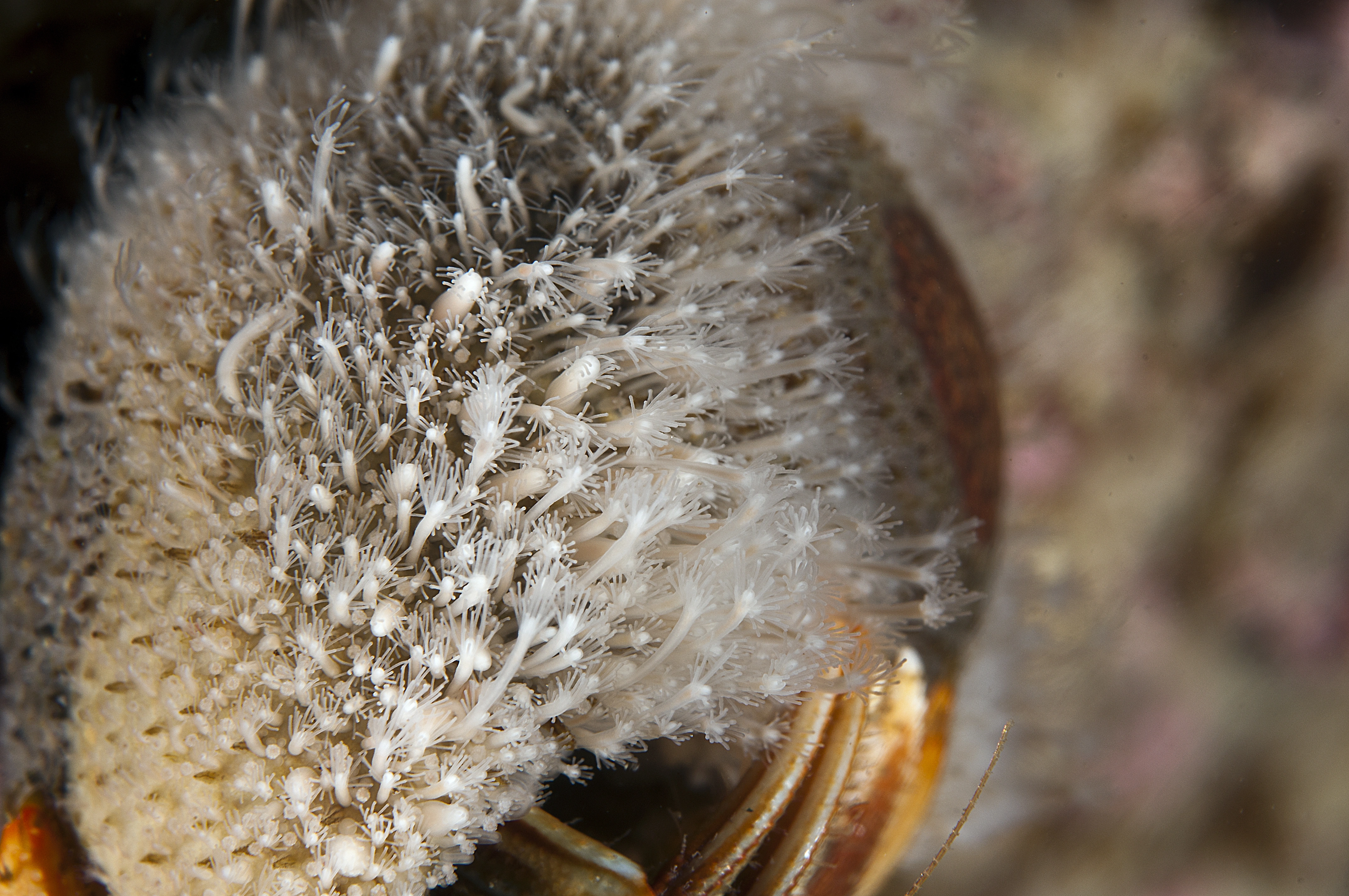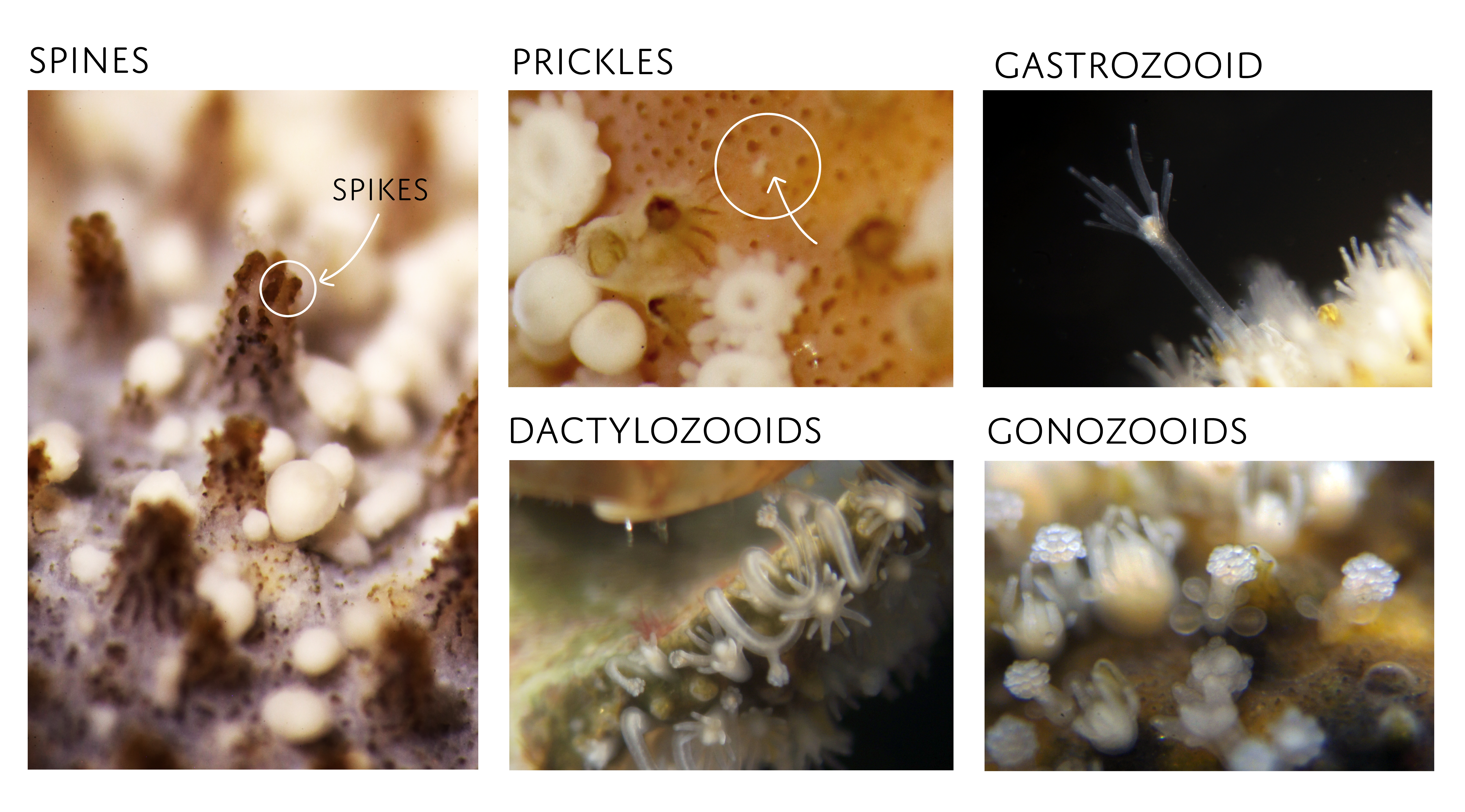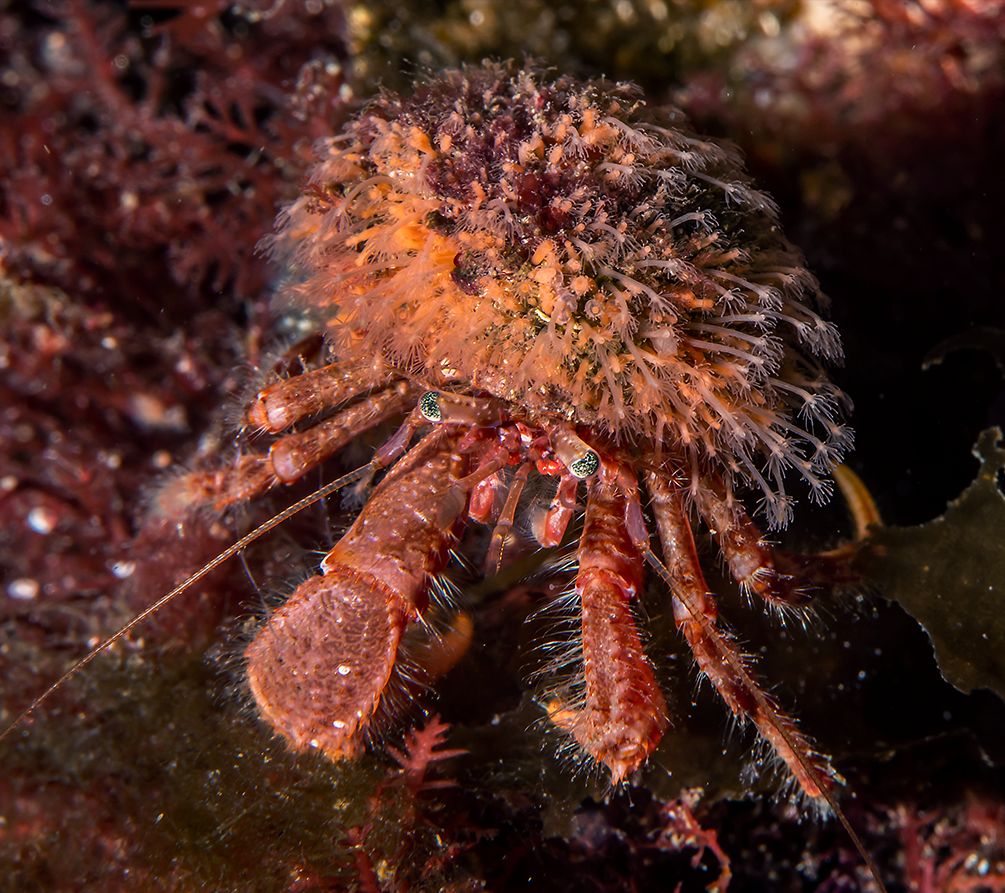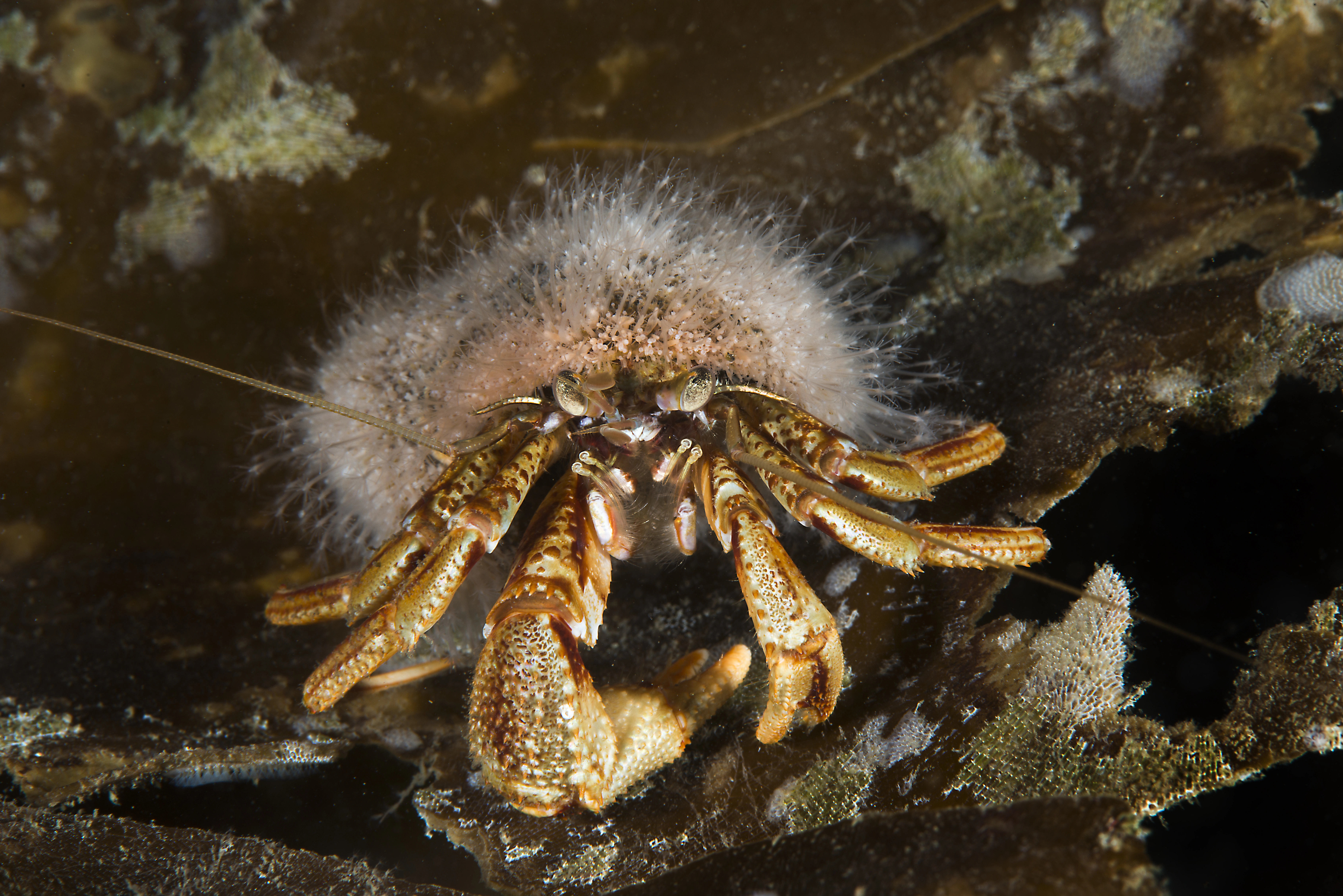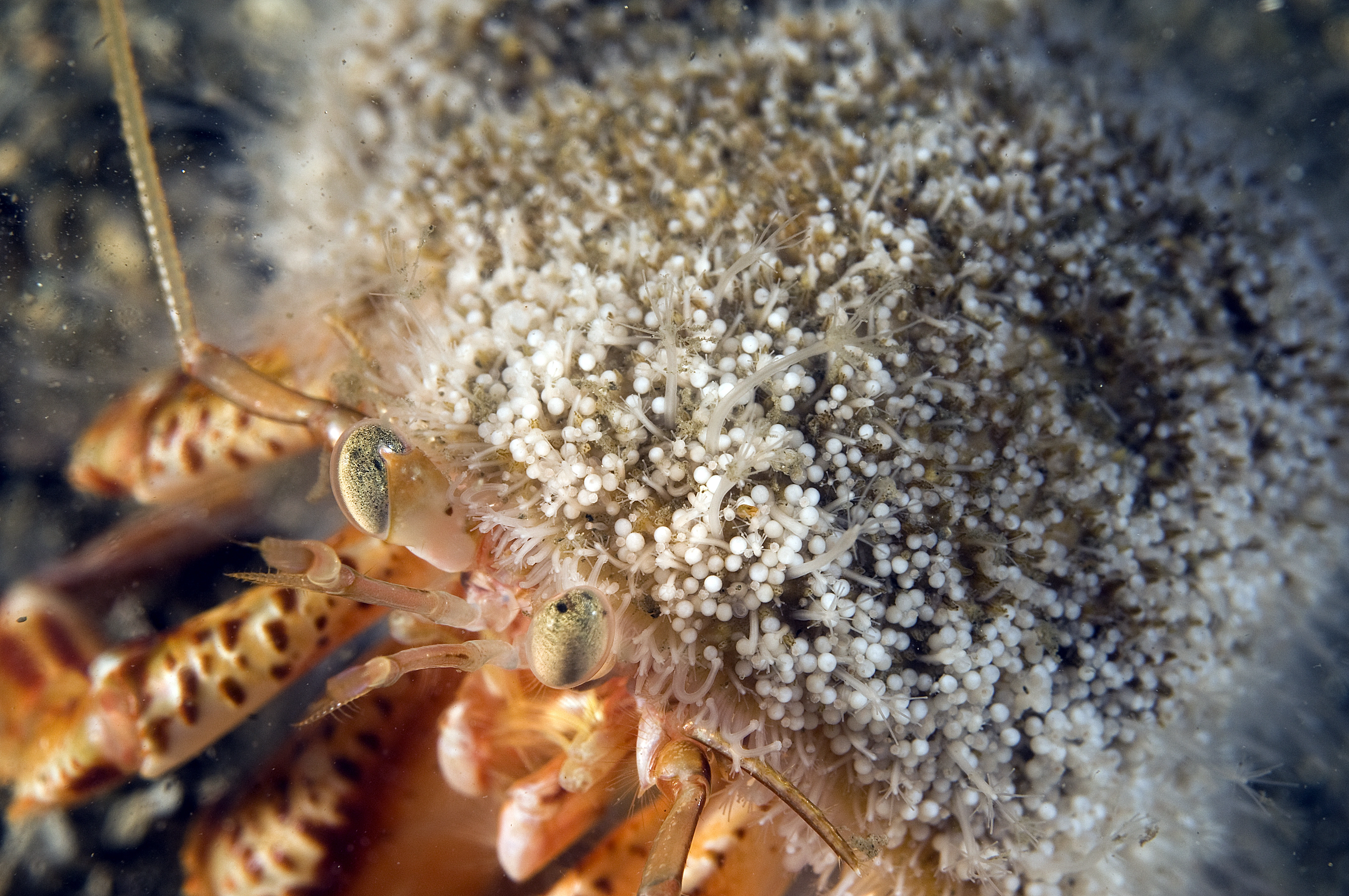Hydractinia echinata
Hydractinia echinata on a shell inhabited by a hermit crab.
The hydroid colonies of this species are known as snail fur or eremittkrepshydroider because they often grow on snail shells inhabited by hermit crabs, giving the shell a furry appearance. These names are unfortunately a little misleading, since Hydractinia echinata is not the only hydractiniid that grows on hermit crab shells, and neither is it restricted to this substrate. A good sign to recognize this common shallow water species is the presence of large spines with ‘serrated’ (spiky) edges.
The large spines (bottom left corner) characteristic of this species are usually easy to see even when there are many polyps in the colony.
Identification
The colonies of H. echinata have feeding polyps (gastrozooids), reproductive polyps (gonozooids), and defensive polyps (dactylozooids), although the dactylozooids may be absent depending on the substrate and conditions the colony is growing on. The ‘root’ system of the colony (also called hydrorhiza) forms a crust-like layer from which the polyps, spines, and prickles emerge.
The gastrozooids are usually 5–10 mm high and have 15–20 tentacles. The gonozooids are much smaller compared to the gastrozooids. The gonozooids lack tentacles and end instead in buttons of stinging cells, which is a unique characteristic for this species. The colonies often have spines, and these are characteristically large (up to 2 mm) and have several irregularly spikey ridges. The gonophores are fixed sporosacs, they develop in a single whorl in the upper region of the gonozooid.
Relevant characters for the identification of Hydractinia echinata.
Look-alikes
With a closer look, this species is easy to recognize because it is the only hydractiniid species in Norway with a combination of serrated spines and gonozooids that lack tentacles and end in buttons of stinging cells. However, the appearance of the colonies is superficially similar to other members of the family, and several records of H. echinata based on underwater photographs are likely misidentifications.
Hydractinia echinata is often the only hydractiniid species included in field identification guides for the North Eastern Atlantic, and this has resulted in an overrepresentation of this species in national databases. Other hydractiniid colonies associated with hermit crabs are commonly mistaken for H. echinata based only on their substrate. In Norway this is the case for Hydractinia sarsii and large colonies of Podocoryna spp.
Biology, ecology and behavior
The colonies of Hydractinia echinata grow preferably on snail shells inhabited by the hermit crab Pagurus bernhardus, although they can also grow on other substrates such as other hermit crabs, crab carapaces, and wood. Hydractinia echinata is a shallow water species with a preferred depth range of 0–100 m.
The furry appearance that the colonies give to their substrate are the reason why this species is commonly known as ‘snail fur’
Distribution
Hydractinia echinata is one of the most commonly reported hydractiniids in Norway, although many of these records need to be validated. It occurs in the Northeastern Atlantic from the Arctic Ocean south to NW Africa, including the North Sea and parts of the Baltic Sea, but probably not in the Mediterranean Sea, where its records are likely due to misidentification.
The dactylozooids – polyps specialized in defense of the colony – are often found growing on the edge of the host shell.
References
Schuchert P (2008). The European athecate hydroids and their medusae (Hydrozoa, Cnidaria): Filifera Part 3. Revue suisse de Zoologie 115(2):221–302.
Schuchert P (2012). North-West European athecate hydroids and their medusae: keys and notes for the identification of the species. Field Studies Council. Synopsis of the British Fauna (New Series) No. 59. 364 pp.

